Inside my control, I have:
ContextMenu = new ContextMenu();
ContextMenu.MenuItems.Add(new MenuItem("&Add Item", onAddSpeaker));
ContextMenu.MenuItems.Add(new MenuItem("&Edit Item", onEditSpeaker));
ContextMenu.MenuItems.Add(new MenuItem("&Delete Item", onDeleteSpeaker));
ContextMenu.MenuItems.Add( ??? );
ContextMenu.MenuItems.Add(new MenuItem("Cancel"));
How to add a separation line to this ContextMenu?
